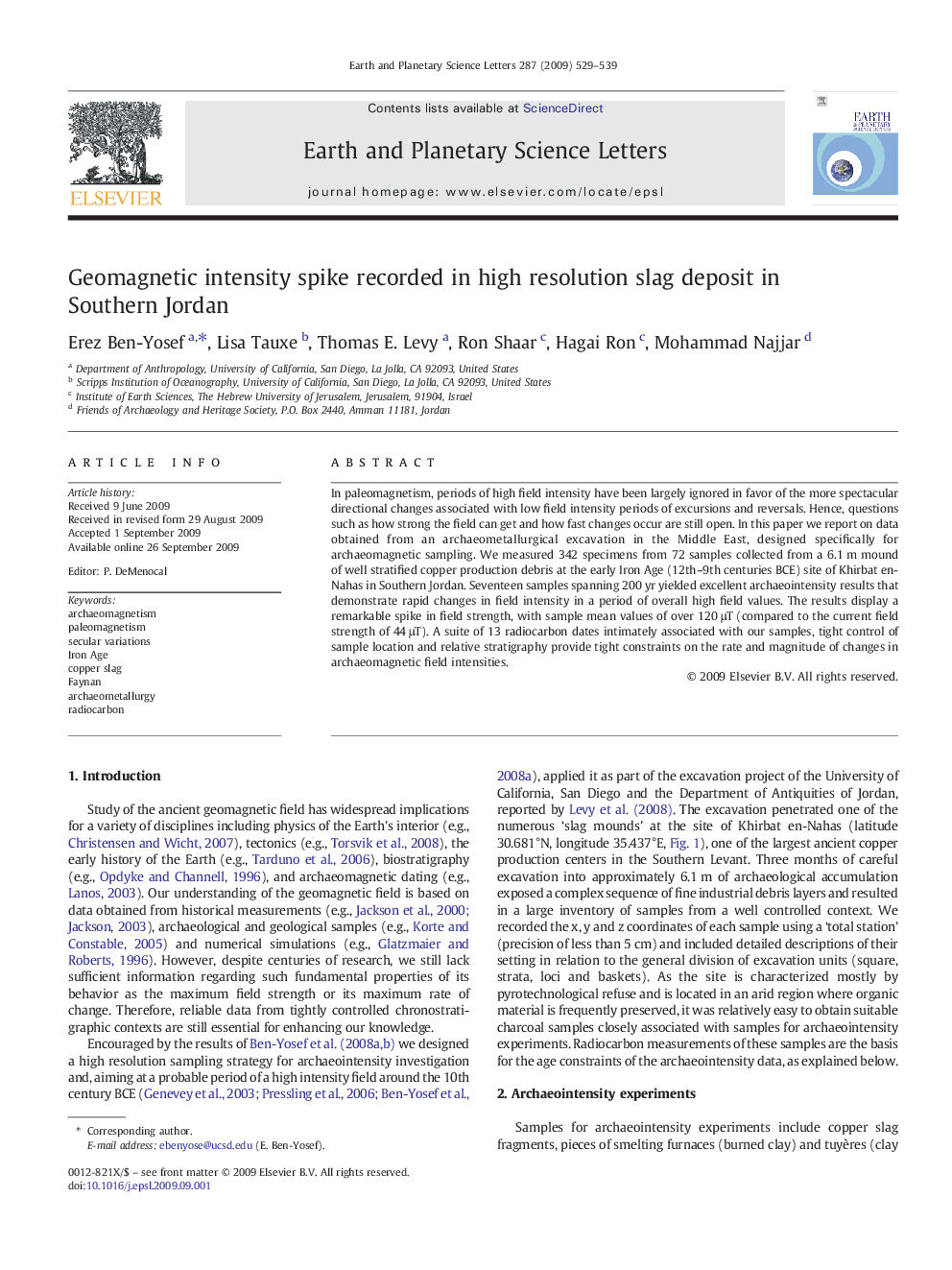| Article ID | Journal | Published Year | Pages | File Type |
|---|---|---|---|---|
| 4679068 | Earth and Planetary Science Letters | 2009 | 11 Pages |
In paleomagnetism, periods of high field intensity have been largely ignored in favor of the more spectacular directional changes associated with low field intensity periods of excursions and reversals. Hence, questions such as how strong the field can get and how fast changes occur are still open. In this paper we report on data obtained from an archaeometallurgical excavation in the Middle East, designed specifically for archaeomagnetic sampling. We measured 342 specimens from 72 samples collected from a 6.1 m mound of well stratified copper production debris at the early Iron Age (12th–9th centuries BCE) site of Khirbat en-Nahas in Southern Jordan. Seventeen samples spanning 200 yr yielded excellent archaeointensity results that demonstrate rapid changes in field intensity in a period of overall high field values. The results display a remarkable spike in field strength, with sample mean values of over 120 μT (compared to the current field strength of 44 μT). A suite of 13 radiocarbon dates intimately associated with our samples, tight control of sample location and relative stratigraphy provide tight constraints on the rate and magnitude of changes in archaeomagnetic field intensities.
